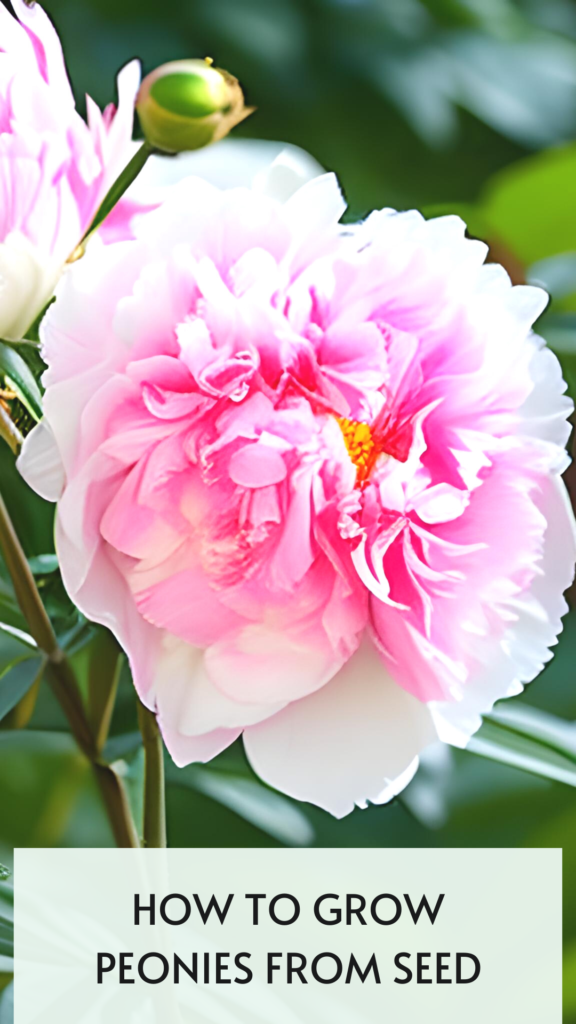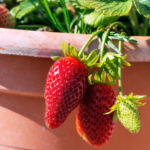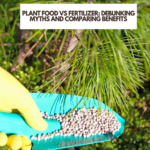Are you wondering how to grow peonies from seed? Growing peonies from seeds can be tricky, but definitely possible. In this article we will walk you through the process of growing peonies from seed, starting with the collection and preparation of seeds, and advancing to the care and nurturing of the seedlings until they develop into blooming plants and growing your beautiful peony flowers.
.
Peonies are beloved for their exquisite flowers and lush foliage, making them a popular choice for garden enthusiasts around the world. Growing these beautiful plants from seed can be a rewarding experience, as it allows for a more diverse range of unique colors and forms.
The art of growing peonies from seed requires patience, as it can take anywhere from one to three years for seedlings and bare root plants to produce their first flowers. However, the end result is well worth the time and effort, as you’ll witness the growth and development of your very own peony garden.
By following the proper steps and understanding the specific growing conditions that peonies prefer, you’ll set yourself up for success in cultivating these breathtaking plants.
Before delving into the world of peony seed propagation, it is crucial to gather all necessary materials and gain a familiarity with the life cycle of the peony plant. This knowledge will serve as a solid foundation and will make the following steps in this guide easier to comprehend and execute. With commitment and dedication, you’ll soon be admiring your flourishing peony garden, all grown from seed.
FTC DISCLOSURE: Some of the links in this post are affiliate links. If you click on them and make a purchase, I will receive a small finder’s fee on the sale. This does not increase your price in any way shape or form. Using these links help support the continuation of this website. All opinions are my own. Thank you in advance.
Selecting Peony Seeds
Types of Peonies
When growing peonies from seed, it’s essential to select the right type of peony seeds. There are mainly two types of peonies: tree peonies and herbaceous peonies.
Tree Peonies (Paeonia suffruticosa) are deciduous shrubs native to China that produce beautiful blooms on woody stems. These plants can grow up to 6 feet tall and have an extended blooming period compared to herbaceous peonies. Tree peonies are often grown for their impressive and eye-catching flowers. Some popular tree peony cultivars include:
- ‘High Noon’
- ‘Godaishu’
- ‘Phoenix White’
Herbaceous Peonies (Paeonia lactiflora) are perennial plants that die back to the ground every winter and regrow in the spring. They are known for their large, fragrant blooms in various colors – such as white, pink, red, and even yellow. There are many herbaceous peony cultivars to choose from, with some popular options being:
- ‘Sarah Bernhardt‘
- ‘White Wings’
- ‘Coral Charm‘
When selecting peony seed pods, consider the following factors:
- Hardiness Zone: Ensure that the chosen peony seeds are suitable for your region’s hardiness zone. Both tree and herbaceous peonies can successfully grow in USDA zones 3 through 8.
- Bloom Time: Peonies have different blooming times, ranging from early spring to late summer. By selecting cultivars with various bloom times, you can enjoy peony flowers for a more extended period.
- Color and Fragrance: Peonies come in a wide array of colors and fragrance profiles. Consider selecting seeds for peonies that will complement your garden’s visual and sensory elements.
By carefully selecting peony seeds based on the factors mentioned above, you can successfully grow peonies from seed that will thrive in your garden and provide beauty for years to come.
Planting and Growing Conditions
Soil Requirements
Peonies thrive in well-draining soil with a neutral to slightly acidic pH of 6.5 to 7.0. Clay soil can be amended with organic matter to improve drainage and fertility. When preparing the planting site, incorporate compost or well-rotted manure into the soil to a depth of about 12-18 inches. This will assist in developing strong roots and healthy plants for your peony seedlings.
Sunlight Requirements
For optimal growth and blooming, peonies require full sun, which means at least six hours of direct sunlight per day. Some light afternoon shade may be beneficial in areas with extreme heat, but too much shade can reduce flower production and contribute to foliar diseases.
Water Requirements
Peonies need consistent moisture, especially during the growing season. Provide an inch of water per week, either through rainfall or supplemental irrigation. Avoid overwatering, as soggy soil can lead to root rot. It’s best to water the plant’s base to keep the leaves dry and reduce the risk of disease.’
You Might Also Like To Read:
How To Grow Herbs on A Balcony
Temperature Requirements
Peonies are hardy perennials and grow well in USDA zones 3-8. They can tolerate temperature fluctuations but prefer cooler climates where they undergo a winter dormancy period. This chilling requirement (usually below 40°F for several weeks) is essential for the plant to produce buds and bloom the following spring.
Keep these planting and growing conditions in mind when starting your peony seeds. With the proper care, your peonies will mature into resilient and beautiful garden additions, providing an impressive display of blooms year after year.
Preparing the Seeds
Cold Stratification
Peonies require a period of cold in order to germinate properly. This process, known as cold stratification, mimics the natural cold winters the seeds would experience in the wild. To achieve this, place the peony seeds in a plastic bag with moist peat moss or vermiculite, and then store them in the refrigerator.
Here is a suggested timeline for cold stratification:
| Duration | Temperature |
|---|---|
| 6 weeks | 35°F-40°F |
| 4 weeks | 50°F |
After completing the cold stratification, it’s essential to examine the seeds for any signs of mold or decay. If some seeds appear unhealthy, discard them to protect the viable ones.
Germination
Once the cold stratification process is complete, the peony seeds are ready for germination. Plant them in individual containers filled with a moist, well-draining soil mix. Ensure that the seeds are spaced about an inch deep and an inch apart.
Keep the containers in a location with indirect sunlight or under a grow light. Keep them in moist soil, but be cautious not to overwater, as this may cause the seeds to rot and potential fungal diseases. Peonies have a slow germination rate, so be patient while awaiting signs of growth – this can typically take several weeks or even months.
To encourage healthy seedling growth, maintain temperatures between 65°F and 75°F. Once seedlings have developed a few sets of true leaves, they can be gradually acclimatized to outdoor conditions before being transplanted into the garden.
Planting Peonies
Outdoor Planting
To plant peonies outdoors, it is best to do so in the fall. Choose a location with well-draining soil and full sun. Dig a hole deep enough to accommodate the peony’s eyes, approximately 1 to 2 inches below the soil surface.
Place the peony in the hole, with the eyes facing upward. Fill the hole with soil and gently pat it down to eliminate any air pockets. Water the area thoroughly to help the soil settle around the plant.
Once planted, add a layer of mulch, about 2 to 3 inches deep, to help conserve moisture and maintain a consistent soil temperature. In the spring, fertilize the peonies with a balanced fertilizer for optimal growth. This will get it ready for the cold climate.
Indoor Planting
If you prefer to grow peonies indoors, you can propagate them from seeds. Here are the steps for indoor planting:
- Preparation: Soak peony seeds in water for about 24 hours to soften the seed coat and promote germination.
- Container: Select a container with drainage holes and fill it with a well-draining, moist seed-starting mix.
- Planting: Plant the seeds 1 to 2 inches deep, with the seed’s hilum (dent) facing downward.
- Water: Water the seeds gently, ensuring the growing medium is damp but not soaked.
- Growth: Place the container in a location with indirect sunlight and maintain a temperature of 65°F to 70°F. Check the moisture level regularly.
- Transplanting: Once the peonies have sprouted and formed a few sets of leaves, you can transplant them to a larger container or their final outdoor location, following the same process as for outdoor planting.
Remember to provide proper care for both outdoor and indoor peonies, which includes regular watering, fertilization, and monitoring for pests and diseases. With the right care, your peonies will thrive and reward you with beautiful blooms.
Transplanting Peonies
When to Transplant
Transplanting peonies is best done in the autumn, before the ground freezes. Adhering to this timing is the best way to allow the roots to establish themselves and grow before winter sets in. Fall planting with also provides peonies with a chance to develop a stronger root system, crucial for healthy growth in the following seasons.
Transplanting Process
To transplant peonies, follow these steps:
- Preparation: Choose a well-draining location with full sun exposure. Prepare the planting area by loosening the soil and removing any weeds or debris.
- Digging up the plant: Carefully dig around the existing peony plant using a spade, ensuring to maintain a generous distance from the roots to avoid damage. Gently lift the root ball out of the ground, taking care not to break the roots.
- Dividing the root ball: If you’re propagating peonies from a mature plant, use pruners to carefully divide the root ball into smaller clumps, each with at least three to five eyes. This ensures the resulting plants have enough energy to grow successfully.
- Planting: In the prepared planting area, dig a hole large enough to accommodate the root system of the peony. Place the peony roots in the hole with the eyes (small red or pink buds) facing upwards and about 1 to 2 inches below the soil surface.
- Backfilling and watering: Fill the hole with soil, taking care not to bury the eyes too deeply. Water generously to settle the soil around the roots, ensuring good contact between roots and soil.
By following these transplanting steps, your peonies will have the best chance of establishing a strong root system and producing beautiful blooms in the years to come.
Caring for Peonies
Peonies are a popular choice for many gardeners, as they provide beautiful blooms, fragrant flowers, and long-lasting plants. In this section, we will discuss how to care for peonies, including fertilizing, watering, pruning, staking, and disease management, to ensure the success and longevity of these striking perennials.
Fertilizing
To help peonies grow and bloom successfully, they require proper fertilization. In general, a well-balanced fertilizer, such as a 10-10-10 formula, should be applied in the spring and fall. However, if the soil type is rich in organic matter, a lighter application of fertilizer may be sufficient.
- Spring: Apply a balanced fertilizer as the shoots emerge
- Fall: After the foliage dies back, apply a light layer of compost or well-aged manure to provide nutrients for the following year
Watering
Peonies require consistent moisture to grow and thrive. Water them deeply once a week, being sure not to over-water, as this can lead to root rot and other issues.
- Water at the base of the plant to keep the leaves dry and prevent fungal diseases
- Maintain even moisture level, especially during periods of drought
Pruning
Peonies benefit from annual pruning to maintain their shape, increase air circulation, and encourage healthy growth. Pruning involves removing dead or diseased plant material, as well as any overcrowded stems.
- Prune at the end of the growing season, typically in the fall
- Cut back any dead or diseased stems to the ground
- Remove crowded or weak stems to encourage new growth
Staking
Taller varieties of peonies and those with large blooms may require staking to prevent them from flopping over. Providing proper support allows plants to focus their energy on growing and flowering.
- Stake plants in early spring, before the stems become too tall
- Use stakes that are tall enough to support the height of the plant at maturity
- Tie stems loosely to the stakes using soft material, such as twine or strips of cloth
Disease Management
Peonies are generally quite resilient, but certain diseases can impact their growth and overall health. Regular monitoring is key to managing potential problems and ensuring the plants remain healthy.
- Keep an eye out for tell-tale signs of diseases, such as powdery mildew, leaf blotch, or botrytis blight
- To prevent fungal diseases, maintain good air circulation by spacing plants appropriately and pruning when necessary
- If infectious diseases are detected, remove affected parts promptly and dispose of them properly to prevent the spread
By following these guidelines, you can ensure your peonies will continue to grow, bloom, and enhance your garden landscape for years to come.
Peony Varieties and Characteristics
Peonies are a popular choice for gardeners due to their stunning blooms and delightful fragrance. Peonies have a relatively long blooming season, which typically occurs in late spring to early summer. There are three main types of peonies: herbaceous peonies, tree peonies, and intersectional peonies.
Herbaceous Peonies
Herbaceous peonies are the most commonly grown variety of peony. They are characterized by their bushy growth habit and die back to the ground each year. Some popular species include:
- Paeonia lactiflora (Chinese peony):
- Common Name: Chinese peony
- Flower Color: White, pink, red
- Hardiness Zones: 3-8
- Native Area: China
- Paeonia officinalis (European peony):
- Common Name: European peony
- Flower Color: Red, pink
- Hardiness Zones: 4-8
- Native Area: Europe
Tree Peonies
Tree peonies are woody shrubs that do not die back to the ground like herbaceous peonies. They grow more slowly and often produce larger flowers. Some examples include:
- Paeonia suffruticosa (tree peony):
- Common Name: Tree peony
- Flower Color: White, pink, red, yellow
- Hardiness Zones: 4-9
- Native Area: China
- Paeonia delavayi (Yunnan peony):
- Common Name: Yunnan peony
- Flower Color: Red, maroon, purple
- Hardiness Zones: 6-9
- Native Area: Southwest China
Intersectional Peonies
Intersectional peonies, also known as Itoh peonies, are hybrids between herbaceous and tree peonies. They have a bushy growth habit similar to herbaceous peonies but with the added benefit of tree peony traits, such as more vigorous growth and stronger stems. Some examples of intersectional peonies include:
- Paeonia ‘Bartzella’ (Itoh peony) :
- Common Name: Bartzella peony
- Flower Color: Yellow
- Hardiness Zones: 4-8
- Native Area: Hybrid
- Paeonia ‘Cora Louise’ (Itoh peony):
- Common Name: Cora Louise peony
- Flower Color: White with lavender flares
- Hardiness Zones: 4-8
- Native Area: Hybrid
Peonies, including all types mentioned above, may be potentially toxic if ingested. It is advisable to keep pets and young children away from the plants to avoid accidental consumption.
















